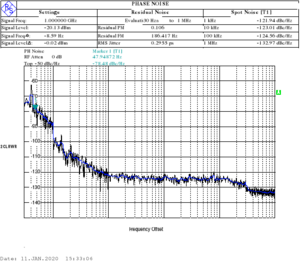User:Cmpxchg
| Project GNSS Reradiator | |
|---|---|

| |
| GNSS reradiator to receive GPS, Galileo L1/E1 indoors | |
| Status | In progress |
| Contact | cmpxchg |
| Last Update | 2020-04-10 |
Summary
An Indoor GNSS Re-Radiator uses an indoor, in-room antenna, to transmits a low-power GNSS signal that is a copy of a GNSS signal picked up on the roof.
Application
One application of this are fire- and ambulance services, parked inside a garage, without a direct view of the sky. The reradiator will wirelessly, via the same frequency, keep the cars/devices supplied with GNSS RF data, so that the latest orbit and clockinformation will be available right when they leave the garage.
Can one navigate indoor using only GNSS signals?
Navigation and timing devices receiving a re-radiated GNSS signal can acquire a position indoor, but will calculate an
approximate position of the rooftop antenna.
It is not practically possible to calculate one's position, perhaps only distance relative to the indoor antenna.
What happens in the receiver is a 'common bias' that is found, resulting in an increase in depth/loss of height for a three-dimensional position calculation, and a shift in position relative to ratio of the elevation of the typically 4 satellites used in the calculation. Almost always the highest elevation satellites are used in the position calculation.
Why are 4 satellites needed to calculate a GNSS position, 3 should be unique already?
The calculation involves pseudo-ranges to four satellites, each with a different path refracted slightly
through the atmosphere. This path creates an error that is too big to lead to a 7- to 12 meter position that is typical
for users. A local clock offset can also be calculated through the use of the fourth satellite.
What GPS/Galileo/GNSS updates can I receive indoor ?
The updates to the satellite orbits and clock drifts are continously transmitted by each GPS or Galileo satellite.
GPS 'broadcast ephemeris' data is valid for 4 hours and is updated every 2 hours, and contains exact information on the keplerian
orbit parameters, and clock offset relative the the GPS master clock. There is no dependency on internet for this data,
all data comes from the same source and is synchronized up to the nanosecond level, by integrating over many 20 msec periods/50 bps.
Broadcast ephermeris is unique to each satellite and is broadcast in 3 of 5 blocks transmitted every 30 seconds.
This is the reason that almost all GPS receivers have a cold-start of a little over 30 seconds (signal acquisition and receiver
turn-on time alignment might be variable)
GPS Almanac data is also transmitted by each GPS satellite, over a period of 12.5 minutes, using the other 2 of 5 blocks every 30 seconds.
GPS Almanac is a map with coarse information of all (other) GPS satellites that might not yet be visible on the sky but could be
tried to be acquired, for example to replace one that just went out of view.
GPS satellites orbit the earth in a little less than 12 hours. All GPS satellites transmit on several L-band frequencies, but the L1 signal on 1574.42 MHz is used by 99% of all receivers. The L1 signals of the 24 GPS satellites are seperated by using BPSK and CDMA, code division multiple access, with a uniqie every msec repeating LFSR signal. An LFSR is Linear Feedback Shift Register that produces
a repeating bitpattern of 2^n-1 length, or 1023 bits - ('chips' in CDMA parlance), using a XOR of two shorter LFSR (Gold codes).
A receiver works by generating the known LFSR/CDMA/chips signal with exactly the right frequency and phase, and performs a
correlation with the received noise, over the period of up to 20 milliseconds. After the search or 'acquisition phase', which can
take a few seconds depending on processing power, the signal can be tracked using a simpler setup.
The by acquisition found correlation peak is tracked by three correlators for each satellite the receiver wants to track, using three copies in time, early, precise and late. The height of correlation is used to feedback the phase and frequency-drift (doppler) of
the locally generated signal. Every 20 msec, the correlation peak can also invert - the inverted LFSR signal is transmitted to indicate
a 0-bit or 1-bit of the 50 bps GPS signal.
How is Galileo different from GPS?
The european Galileo satellite constellation is using a similar concept as GPS, Russia's Glonass and China's Beidou. Russia and China are using their own frequencies and need a different RF frontend.
Galileo and GPS use exactly the same frequency, 1575.42 MHz ca 2 to 4 MHz wide. Galileo uses 2046 chips instead of 1023 chips per symbol, so only a little more bandwidth is needed to receive both GPS and Galileo with the same RF frontend.
Is it legal to transmit GNSS indoor ?
In the Netherlands, one is required to report and acquire a license (vergunning) for a GNSS reradiation installation to Agentschap Telecom, just in case a signal might transmit through an open door or is malfunctioning and interferes with nearby GPS/GNSS users. Since the GNSS signal is still very weak, it will generally not escape via windows or walls to the outside, and it will not become an 'oscillator'.
The rooftop receive antenna should pick up signals from satellites from all directions, except the ones reflected from the ground or
via other buildings or own windows.
Where can I read more on GPS and Galileo?
Building a receiver is not a simple task, it involves a lot of electronics, some math, and software.
However, with both GPS and Galileo, a position and time can be gathered, without have to relay this information via
a third-party radio network, like the internet, 2G/3G/4G etc. An excellent source of this are the following books:
2007 - Kai Borre - A software Defined GPS and Galileo Receiver
2009 - Frank van Diggelen - A-GPS
2007 - Blog of Michele Bavaro on development on various GNSS / GPS / Galileo / Beidou / Glonass receivers
2017 - Article displaying gratitude after the disappearce of Kai Borre summer 2017
2017 - Agentschap Telecom aanvraag GNSS repeater per 1 April 2017 (tegenwoordig 'enkel hulpdiensten' - geen kantoor, hangars, geen checks?)
